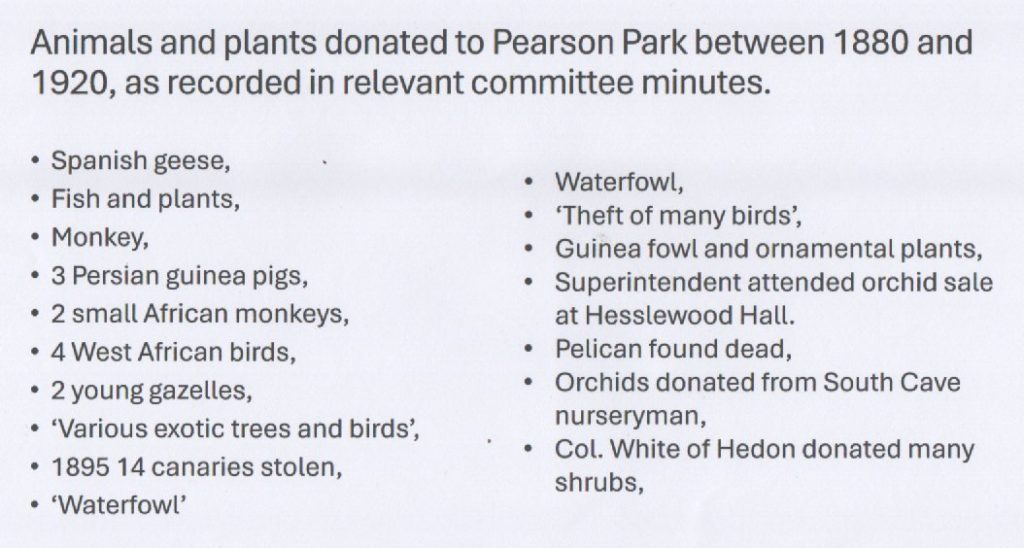Pearson Park, Hull’s first municipal park, was inaugurated in 1860 having previously been four fields on the edge of town. The original plan for the Park did not include a menagerie but clearly one developed.

The list above records some of the donations to the Park from members of the public over a 40 year period, this evidence from the minutes of the Burials and Parks Committee of the local authority. Clearly provision had to be made for the shrubs, bulbs, orchids, birds and mammals donated which must have been an ongoing expense as well as that of feeding the animals and birds. So a menagerie developed.
Often the donations were from sea captains who had travelled to foreign ports and had bought or trapped animals and birds not native to this country but which were surviving in their care. Clearly the keeping of ‘exotic creatures’ was more common as a hobby then than now, when fewer animal welfare and importation rules applied. Generally it seems the Park superintendent accepted the creatures and the responsibility that went with them – cages, fencing, housing etc. One reason for this was that municipal parks always felt a duty of educating, in this case showing members of the public animals and birds they might never otherwise see, and signage would be put up telling them some relevant facts, this being an age before television, documentaries and wildlife programmes. Many of the homes from which children in the Park came would have had no books. That stated, the mistreatment, killing or stealing of animals or birds was taken very seriously and miscreants punished in Law, and very swiftly by today’s standards. This being an age when parks had at least one resident keeper and a number of workers each day.
The plants could more easily be coped with although the orchids would need a heated conservatory. Again theft of, or damage to, plants were taken seriously.